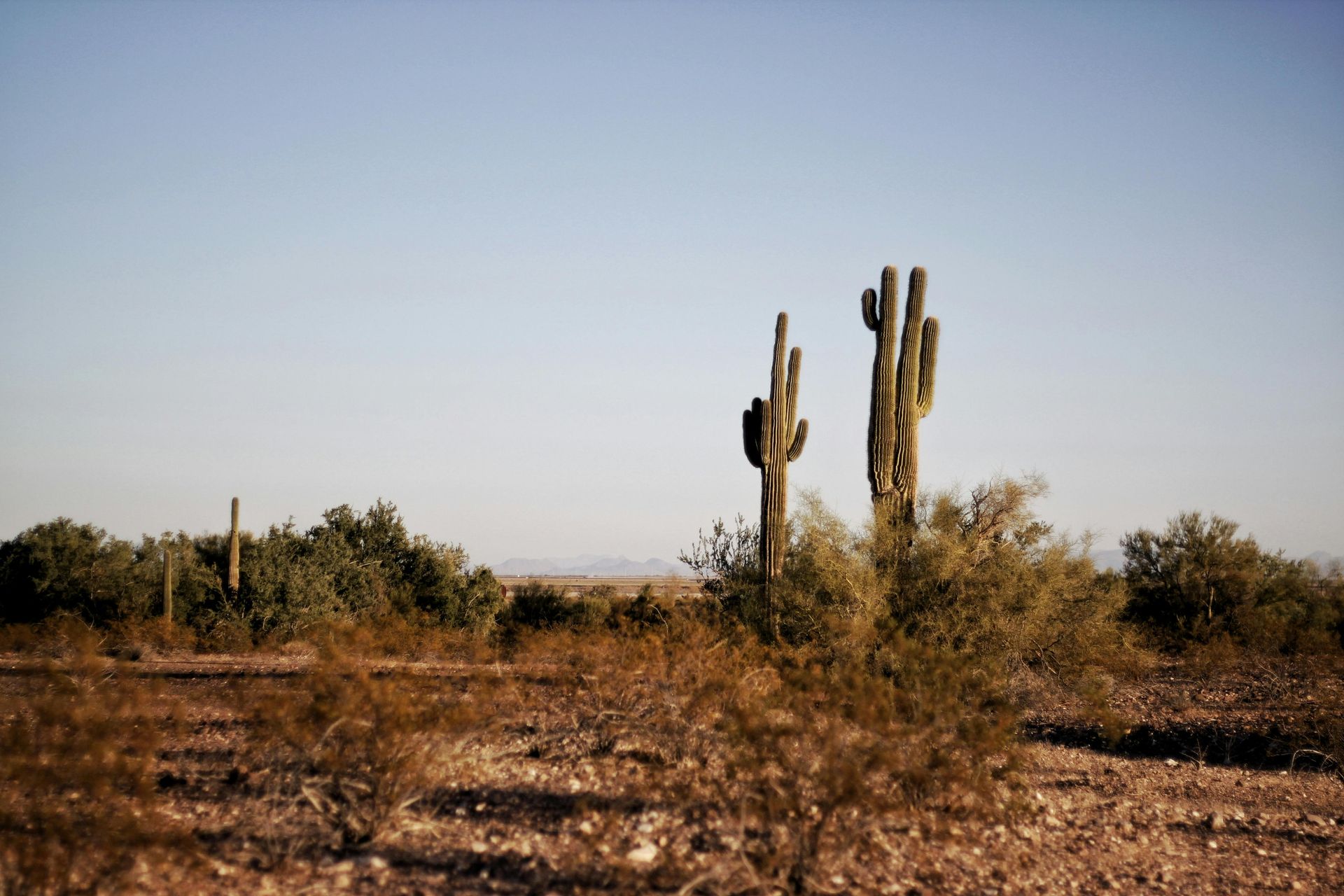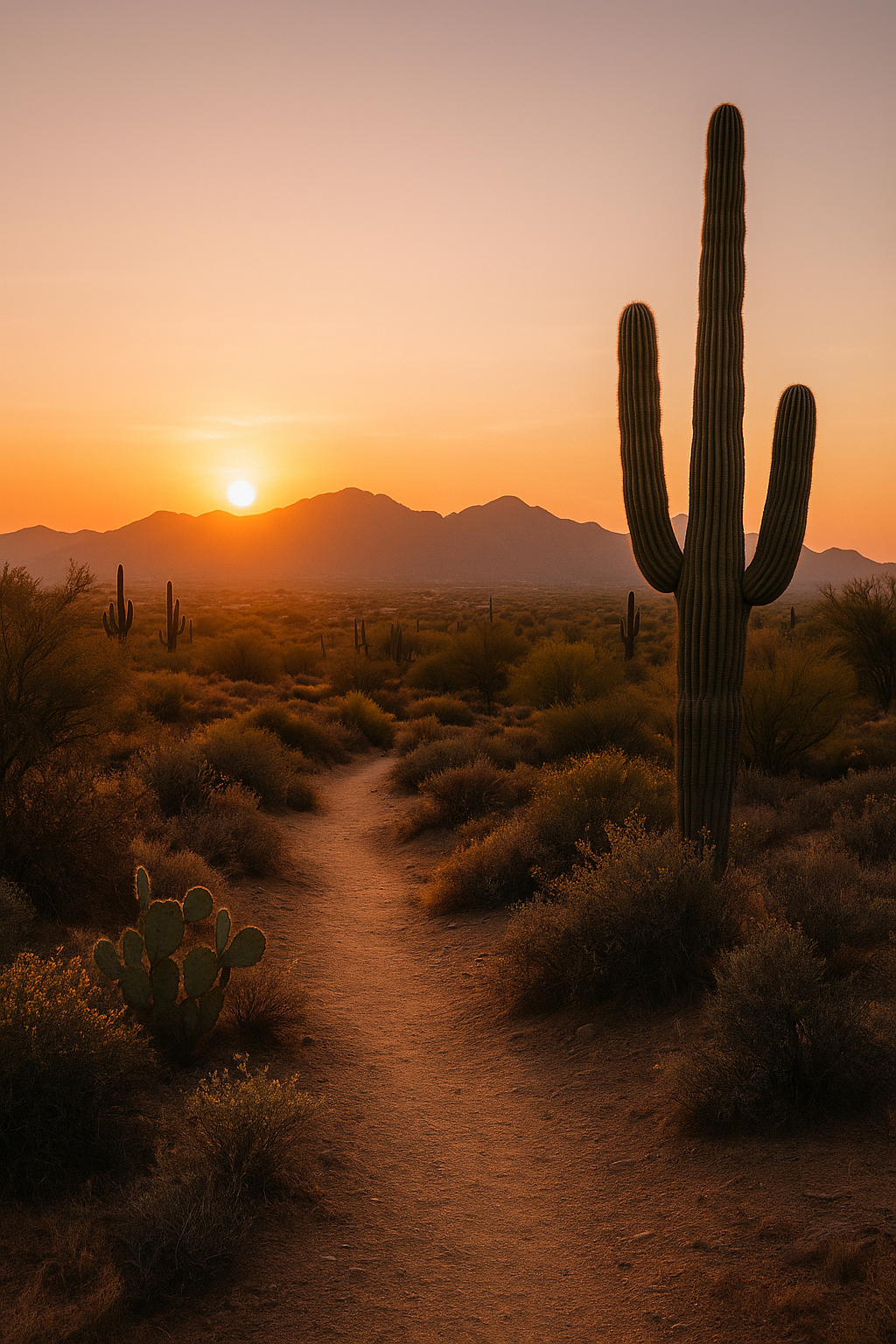What Nobody Tells You About Summers When You Move to Scottsdale, Arizona
A Real Estate Agent's Honest Guide to Surviving Life on the Surface of the Sun

When I first moved to Scottsdale from Central Valley California in 2020, I thought I understood hot weather. Growing up in the Central Valley, we had our share of triple-digit days. But nothing - and I mean nothing - prepared me for what Arizona summer actually feels like.
Before I became a local, "115 degrees" sounded like pure hell. Now? The next word after "115" is usually... Tuesday.
If you're considering a move to Scottsdale or anywhere in the Phoenix Valley, here's the unfiltered truth about what summer living really looks like.
The Golden Rule of Arizona Summer Survival
Your steering wheel becomes your weather gauge. If you can't touch it without wincing, you're in for a long day. This isn't an exaggeration - it's a legitimate safety concern that nobody mentions in the moving guides.
What Actually Happens When Summer Hits Scottsdale
The Oven Effect
Most days from May through September feel like living inside an oven that someone forgot to turn off. We're basically existing on the surface of the sun for five months straight. It's still livable, but there's a reason you'll find people actually vacation away from Arizona during these months rather than to it.
Everything Becomes a Potential Hazard
The real challenge isn't just the air temperature - it's that every surface becomes a weapon. Metal playground equipment, car door handles, even the ground itself can cause burns. Learning which surfaces to avoid, which parking spots offer shade, and which stores have the most reliable air conditioning becomes essential local knowledge. Your shopping strategy changes completely. You'll find yourself planning errands around air conditioning stops, and parking spot selection becomes a strategic decision that affects your entire day.
Technology Can Be Your Lifesaver
Remote start isn't a luxury in Arizona - it's practically a medical device. Cars with remote start capabilities are significantly less likely to give you third-degree burns from seat belts, steering wheels, or gear shifts. If you don't have it, you'll find yourself developing creative cooling strategies that would look odd anywhere else in the country.
The Hibernation Strategy
Summer living in Arizona requires a complete lifestyle shift. You stock up on sunscreen, water, and indoor activities, then essentially hibernate during daylight hours. The unspoken rule: don't venture outside between 10 AM and 6 PM unless absolutely necessary. But here's the interesting part - the social scene adapts. Pool parties happen at midnight, morning coffee dates start at 5 AM, and someone always brings ice to everything. The community finds ways to maintain connection despite the hostile environment.
Signs You've Gone Full Arizona Local
You know you've adapted when you start ignoring weather warnings until temperatures hit 120 degrees. You'll catch yourself genuinely debating whether 105 degrees actually feels "nice" compared to the 115-degree days you've been enduring.
The five-month timeline becomes your new normal. Most long-time locals don't even start complaining until it's been over 110 degrees for three consecutive months.
The Summer Timeline
While Arizona summer technically runs from May through September, July and August represent peak survival mode. May and September are considered the "warm-up" and "cool-down" months, though visitors from other states would consider them brutally hot.
My First Full Arizona Summer: A Reality Check
In 2020, my first complete Arizona summer taught me lessons no amount of research could have prepared me for. I bought SPF 50 sunscreen like a responsible adult and thought I was prepared. Summer still managed to melt my patio furniture, kill half my landscaping, and teach me that hydration requirements in the desert are unlike anywhere else I'd lived.
The heat can surprise you in ways you don't expect. It's not just about staying cool - it's about respecting an environment that demands constant awareness and preparation.
The Serious Reality
Heat-related illness is a genuine concern in Arizona. Every summer, emergency rooms treat people who underestimated the desert environment. Heat exhaustion and heat stroke are real risks that affect both newcomers and longtime residents who get complacent.
Essential Survival Advice
If you're moving to Arizona or considering it, here's the most important guidance I can offer: respect the desert environment completely.
Preparation beats adaptation every time. It's better to over-prepare for Arizona summers and not need the precautions than to discover you're unprepared when temperatures soar.
Stay hydrated constantly, be strategic about timing outdoor activities, and never underestimate how quickly conditions can become dangerous.
Why We Stay
Despite everything I've shared, I love living in Scottsdale. The eight months of incredible weather from October through May are genuinely spectacular. No snow to shovel, amazing sunsets every night, and outdoor activities that people in other climates can only dream of during their brief summers.
The summer months teach you to appreciate the perfect seasons even more. When October arrives and temperatures drop to the 80s, it feels like a gift.
Moving to Arizona? Let's Talk
As someone who's lived through the adjustment period and now helps others navigate relocation to the Valley, I understand both the challenges and the incredible benefits of Arizona living. If you're considering a move to Scottsdale or anywhere in the Phoenix area, I'm here to provide the honest perspective you need to make an informed decision.
The desert lifestyle isn't for everyone, but for those who embrace it, Arizona offers an unmatched quality of life - even during the months when we're living on the surface of the sun. Ready to learn more about what life in Arizona really looks like? Contact me for a consultation that goes beyond the typical relocation advice.
About the Author: As a real estate professional and Arizona resident since 2020, I specialize in helping people understand what desert living actually entails. My approach focuses on honest guidance that prepares clients for the realities of Arizona life, not just the highlights.



